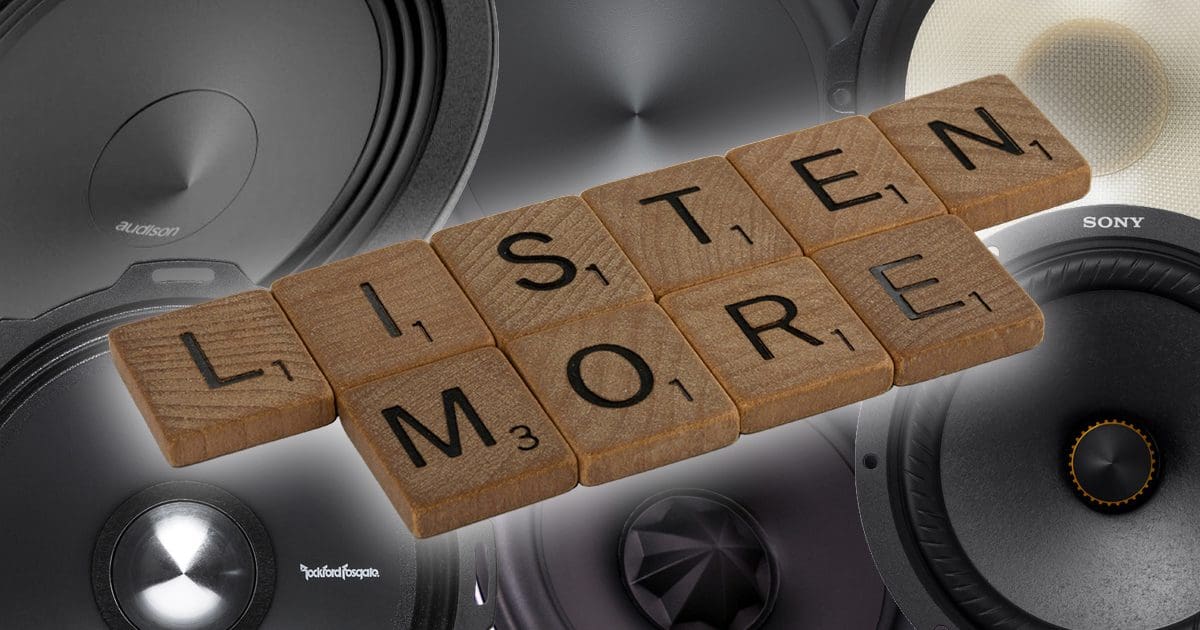Picking new speakers for your home, a new set of headphones or upgrades for your car audio system should all involve the same auditioning process. Take two or three of your favorite songs on a memory stick to a local mobile enhancement retailer and audition the speakers under controlled conditions. We can’t count the number of times people have purchased speakers based on a brand’s perception of quality only to hear others that sound significantly better for equal or sometimes dramatically less money.
We’ve covered the process of auditioning speakers in the past. In this article, we’ll look at what makes speakers that look somewhat similar sound so different.
For this discussion, let’s look at the differences between 6.5-inch woofers that you’d find in a component set. The same design differences apply to many coaxial speakers and even to subwoofers.
Speaker Sizes
You’d think that within a specific speaker size class, the effective cone area of a driver would be pretty consistent. The specification that describes the effective cone area is called Sd and is typically specified in square centimeters, though the official standard is square meters. Many entry-level or high-excursion 6.5-inch drivers have an effective area specification of around 120 square centimeters. Those designs that have been optimized to maximize surface area might be above 140 square centimeters. That’s 17% more cone area that fits in the same application.
In terms of efficiency and low-frequency output, more area is better. The drawback of a larger cone is that it becomes directional at a lower frequency and necessitates a tweeter that can play loudly at frequencies below 2 kilohertz without producing a lot of distortion. Purely from an effective cone area standpoint, you can imagine that different driver designs sound unique, and more so when listened to off-axis.
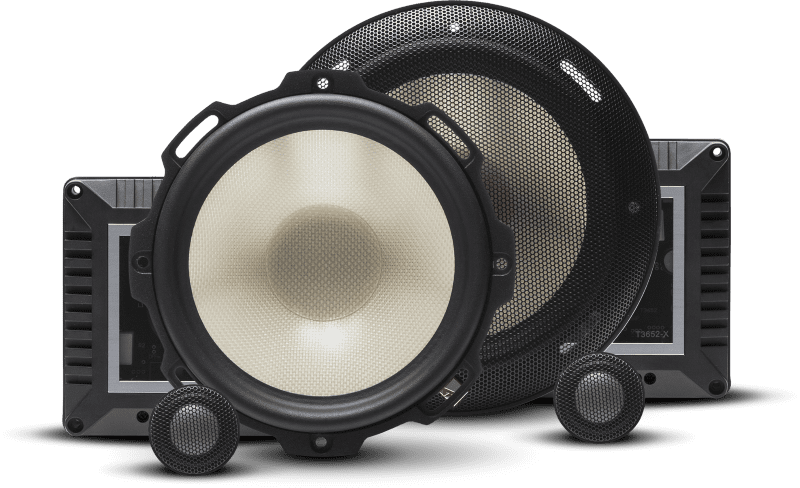
Rockford Fosgate’s Vertical Attach Surround Technology (VAST), as used on the T3652-S set, increases effective cone area for more efficiency and output.
Cone Excursion Capability and Power Handling
If you want to listen to your music at high volume levels, you need a driver that’s designed to be reliable and can move a lot of air. Without getting overly complicated, the length of the voice coil in relation to the height of the motor structure’s top plate determines how far the cone can move forward or rearward linearly. This specification is known as Xmax. It’s calculated by subtracting the top plate’s height from the voice coil’s height, then dividing by two. The suspension design also plays into how linearly the driver operates, but we’ll skip that for the moment. A basic OE replacement speaker might move forward and rearward 2 or 3 millimeters in each direction. A mid-level driver that can play much louder might reach up to 5 millimeters in each direction. The most premium designs offer more than 8 millimeters of excursion (in each direction) and often outperform larger drivers with lesser designs.
Of course, to make a speaker cone move greater distances, an amplifier needs to feed it significant amounts of power. As speakers are notoriously inefficient, much of the energy they receive is converted to heat in the voice coil winding. To increase power handling, larger voice coil formers are necessary. A typical replacement or basic upgrade speaker might have a voice coil with a diameter of 25 centimeters or about an inch. These drivers can often handle up to 75 or 80 watts of power if the winding is relatively long. If it’s short, power handling is usually down around 50 watts.
Better drivers will use larger voice coils in the 38-mm or 1.4-inch range. Power handling on these drivers jumps to around 100 to 125 watts, depending on the rating and testing method. Finally, the most custom designs might use a 51-millimeter former for the most durability at extreme operating levels. Oddly, the companies using these designs seem conservative, with their power ratings at about 100 to 150 watts continuous.
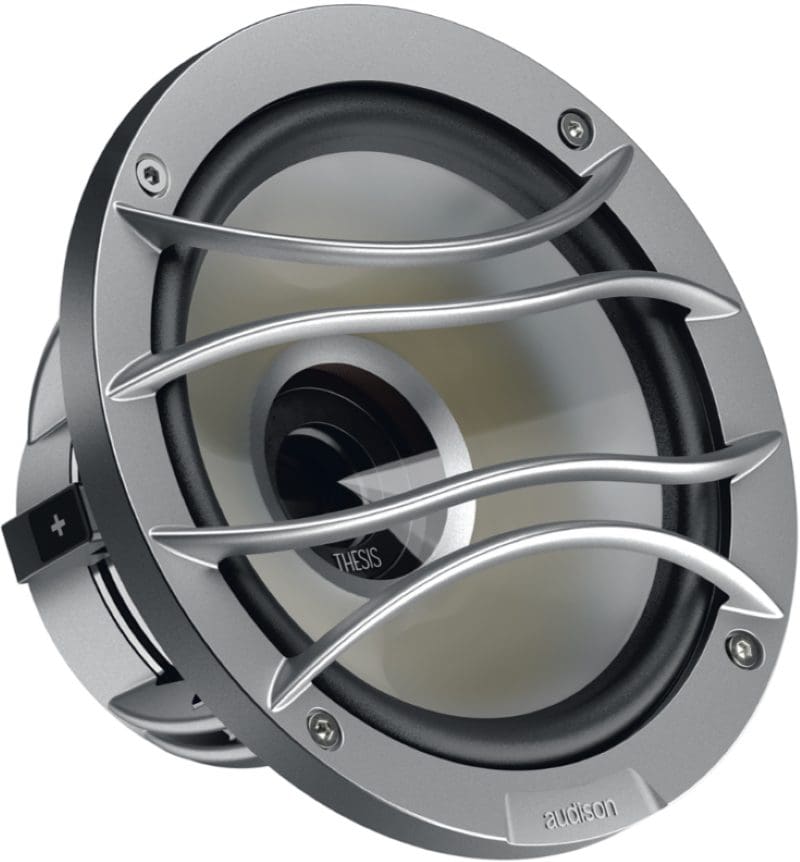
The Audison Thesis TH 6.5 II Sax woofer features a 50-mm voice coil to provide a 150-watt continuous power handling rating.
Cone Materials
If ever there was a topic that confused consumers, it would be the benefits and drawbacks of different woofer cone materials. Paper, plastic, carbon fiber, aluminum, layered composites, woven composites and all manner of in-between designs are prevalent in the top brands. Is one better than another? Some might excel in some frequency ranges while performing poorly in others.
The goal of the woofer cone is to move forward and rearward linearly without resonating. Rigid cones that aren’t well-damped tend to get very excited at higher frequencies and can cause harshness in the upper midrange. They are all reasonably similar at lower frequencies, except for how their mass works with the suspension and motor design to affect bass reproduction. If you see or hear claims of “tighter bass” based on a suggestion of improved cone material, someone doesn’t understand speaker design.
We should talk about dust caps and surrounds as an extension of cone materials. These components exhibit the same distortion-causing resonance issues as a poorly designed cone. These parts aren’t afterthoughts, and their design and selection are paramount to the proper operation of a speaker.
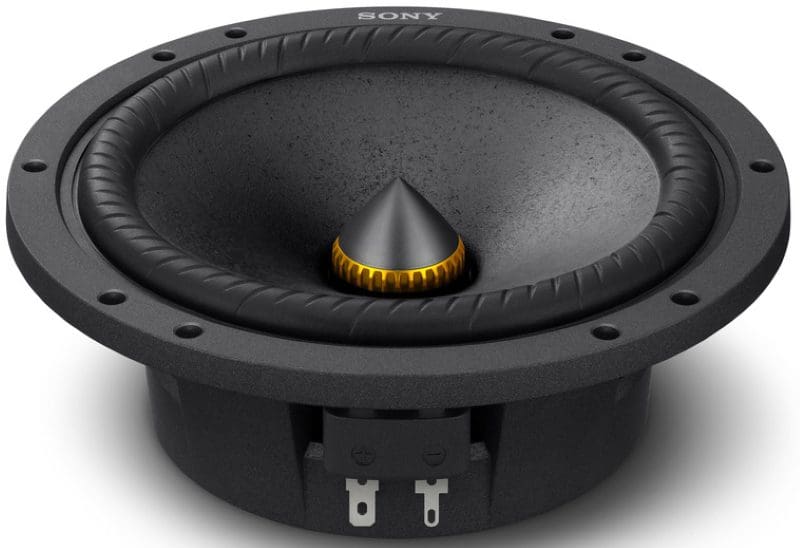
Sony’s Mobile ES Lightweight Rigid Cellular Diaphragm woofer cones control high-frequency resonances to deliver precise audio reproduction.
Motor and Suspension Design
Perhaps the most significant factor of loudspeaker sound quality is the motor’s design and the selection of suspension components. As an extension of our discussion of voice coil geometry and excursion limits, how the suspension behaves at extreme drive levels can effectively determine the sound quality of a speaker. Cupped spiders or those with linear compliance curves can result in significant distortion at lower frequencies and high excursion levels. Distortion will occur if more electrical input doesn’t equate to perfectly symmetrical or a proportional increase in cone travel. I’ve measured high-efficiency drivers that produced more output at 160 Hz than 80 Hz when driven with an 80-hertz sine wave. That’s right; the source information didn’t contain any audio at 160 hertz.
Consistent voice coil inductance based on cone position is also an important issue. When the voice coil moves forward, the T-yoke occupies less of it. When it moves rearward, more of the coil surrounds the T-yoke. This not only changes the inductance of the driver but its perceived frequency response.
The result, in extreme cases, is akin to listening to your voice when speaking through the blades of a moving fan. More high-frequency information is produced when bass information moves the cone outward and less when the cone moves inward. Features like aluminum and copper shorting rings in the motor and copper caps or shields on the T-yoke can help reduce this phenomenon.
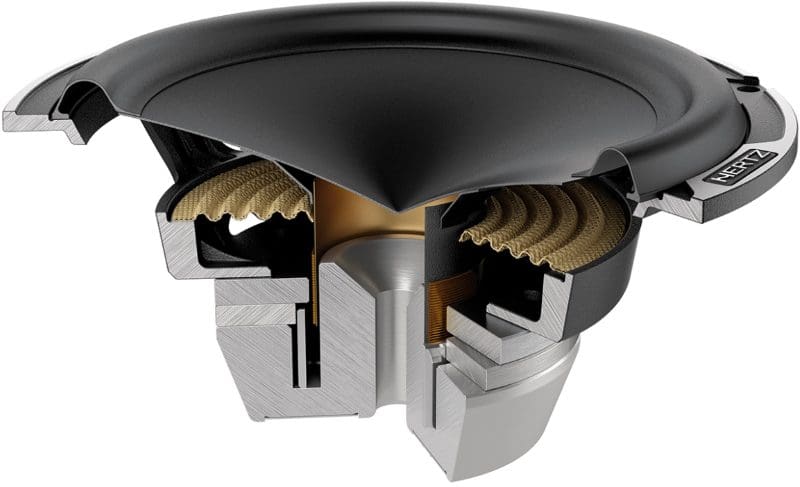
The Hertz ML 1650.3 Legend includes an aluminum-covered pole and a shorting ring to reduce variance in inductance to yield better sound quality.
Another factor that plays a huge role in the understanding of speaker quality is the stiffness of the suspension. A “tight” or inflexible driver typically has a higher Qms (mechanical Q) compared to a very soft one. This results in the driver being overdamped, which causes it to ring and resonate after the signal has stopped. It’s like flicking one of those spring door stops you’d find on the baseboard at home. Mathematically, perfect damping occurs when a driver in its enclosure has a Qtc (total system Q) of 0.5. At this value, the transient response is considered perfect. This comes at the expense of some output in the midbass region. A total system Q of 0.707 is called a Butterworth response, and it exhibits flat frequency response above the resonant frequency with acceptable time-based performance.
Systems with Qtc values around 1.0 are often described as warm as more upper bass information is produced. However, this comes with a significant increase in system distortion and a lack of what is described as “cone control.” It might be fun, but it’s not technically accurate.
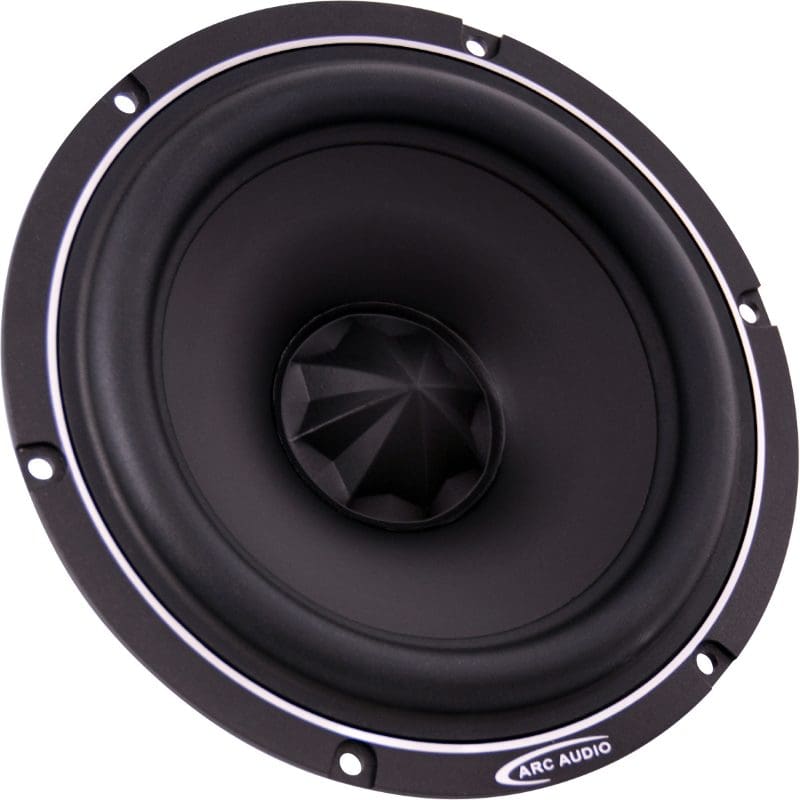
The ARC Audio RS 6.0 is a low-Q driver that combines premium cone and dust cap design with an impressively linear motor assembly to deliver clean performance.
Why You Need to Audition Car Audio Speakers
No two speaker designs are going to sound the same. Some drivers are optimized for efficiency to serve as original-equipment replacement speakers that will work well with a factory-installed or low-power radio. Other drivers are designed to handle significant amounts of power and produce a generous helping of bass at the expense of upper-frequency output.
Efficiency, frequency response, distortion characteristics, directivity, Q-factor and much more change how a speaker sounds. To choose an upgrade that will work well in your audio system, audition the drivers you have in mind under conditions that are as controlled as possible. Looking at graphs and specifications can, if you have years of experience understanding how the information affects performance, tell you something about the driver.
Still, none of that characterizes non-linearities that cause distortion. No car audio companies share that information publicly. As such, you must train your ears to pick up issues affecting performance. Take your favorite music to a local specialty mobile enhancement retailer and start listening. Give the volume on the source unit a good crank and get the speakers working so you’ll know what to expect.
Once you’ve established a baseline for quality, listen to even more speakers. When you can pick out the differences, choose the driver that’s the most accurate in all regards for your vehicle – you’ll be happy you did.
This article is written and produced by the team at www.BestCarAudio.com. Reproduction or use of any kind is prohibited without the express written permission of 1sixty8 media.
